Should kitchen island height be the same as the worktops?
When in comes to kitchen island height it can be hard to know what the design rules say. Here, we explain how to get the height of this desirable kitchen feature spot on
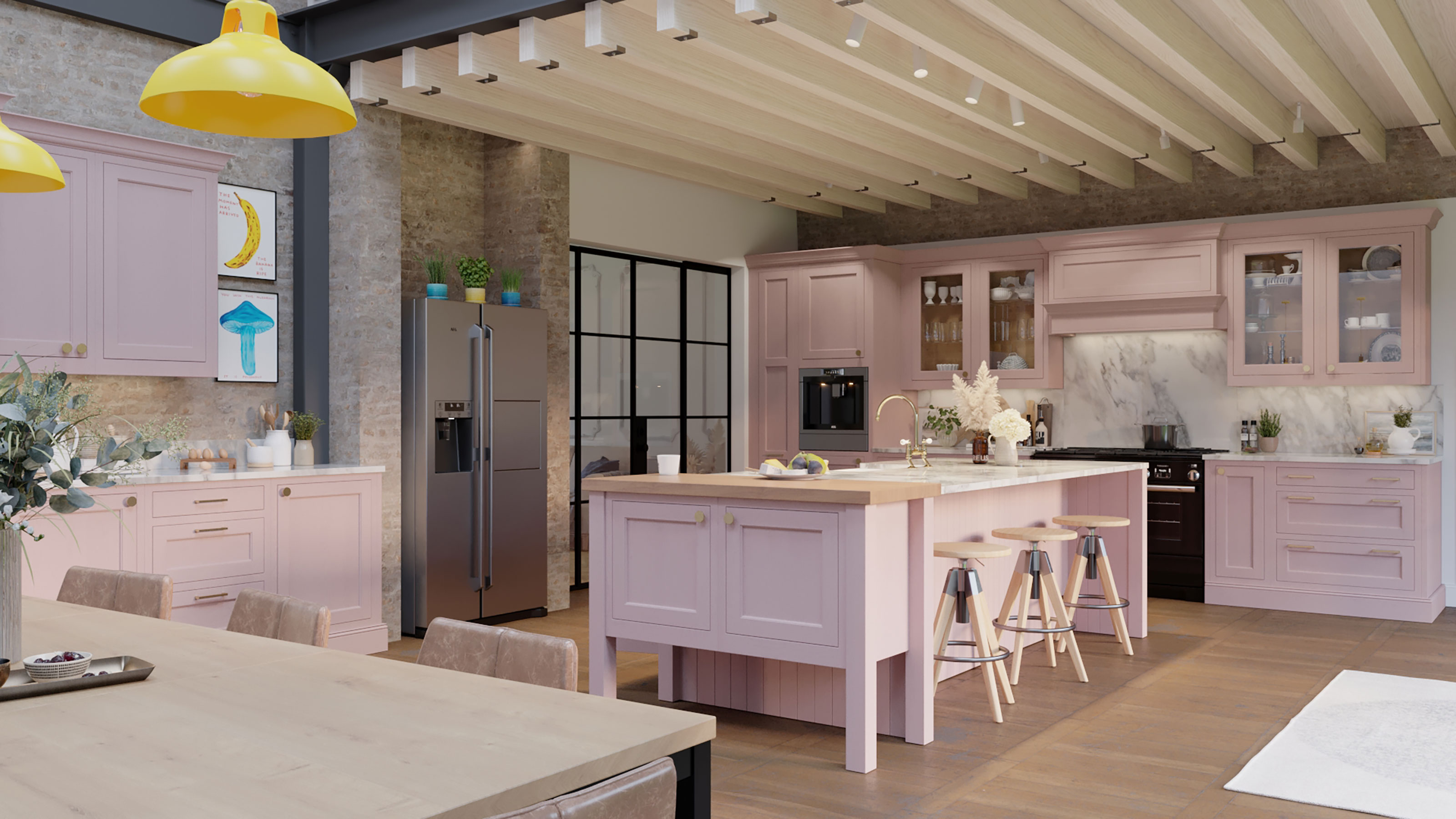
Has the subject of kitchen island height got you scratching your head? This can, admittedly, be a tricky detail to get right. Thankfully, we are here with all the advice you'll need to ensure your new island slides into your interior scheme seamlessly and stands out for all the right reasons.
There are now a huge number of kitchen island ideas to choose from, from those with vast swathes of worktop area on which to prepare food, to designs packed full with sleek appliances and gadgets. There are portable islands, teeny tiny kitchen islands and those that are cleverly divided up into different zones, each with a specific purpose.
However, what we are interested in here is the best height for a kitchen island — we'll also be tackling the big question: should a kitchen island be the same height as the worktops?
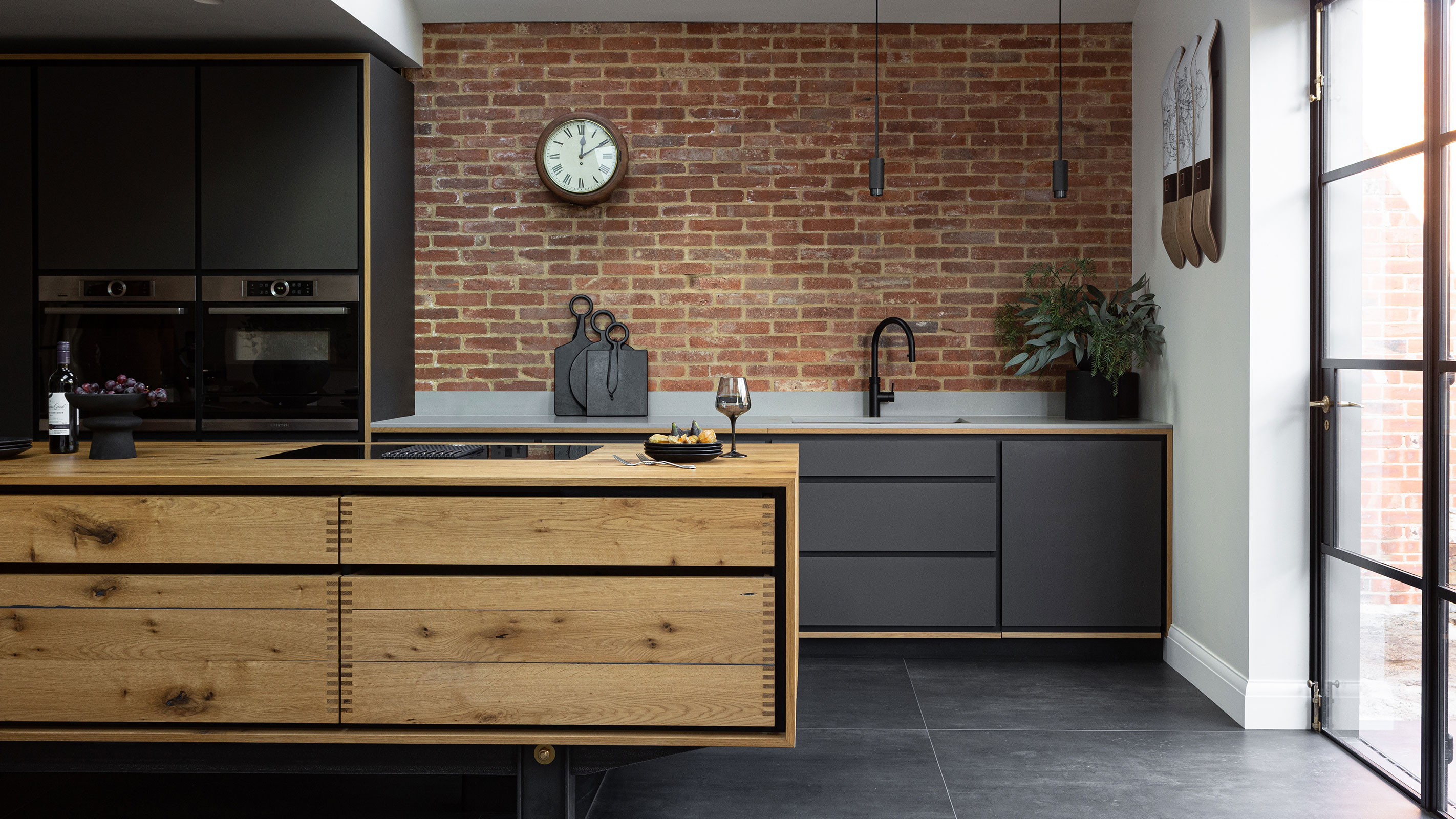
What is the perfect kitchen island height?
While it is quite possible to flick through a magazine, scroll through websites and wander around friends' houses, admiring the brilliant choices that have been made when it comes to the kitchen design, you need to remember at all times that the choices you make for your own kitchen (and interior scheme in general) need to be tailored to you in order to work.
When it comes to designing a kitchen island, there is no one size fits all solution — in short, what works for you and meets all your requirements may well not be at all suitable for someone else.
While the standard height for a kitchen island is usually the same as the standard height of kitchen counters – typically 910mm – this will not necessarily be the right set up for you and for what you intend on using your island for.
In many cases, if you have opted for a bespoke kitchen, your kitchen designer will talk through the best options for you.
Bring your dream home to life with expert advice, how to guides and design inspiration. Sign up for our newsletter and get two free tickets to a Homebuilding & Renovating Show near you.
Before you settle on a height for your kitchen island, ask yourself the following questions, the answers to which should help you get a better grasp on the size and style of island that will be most practical:
- Will you be fitting a hob or cooker into your island and therefore be standing to cook there?
- Will a sink be fitted into your kitchen island?
- Will your island be used to sit and eat at on a regular basis or will it form more of a perch to grab a quick bite?
- Will more than one activity be taking place at once around your island (for example will you have guests seated around it while you cook)?
- Will you be relying on the kitchen island for storage or will this be taken care of elsewhere in the room?
- Do you want to be able to sit at your island on stools or do you find chairs more comfortable?
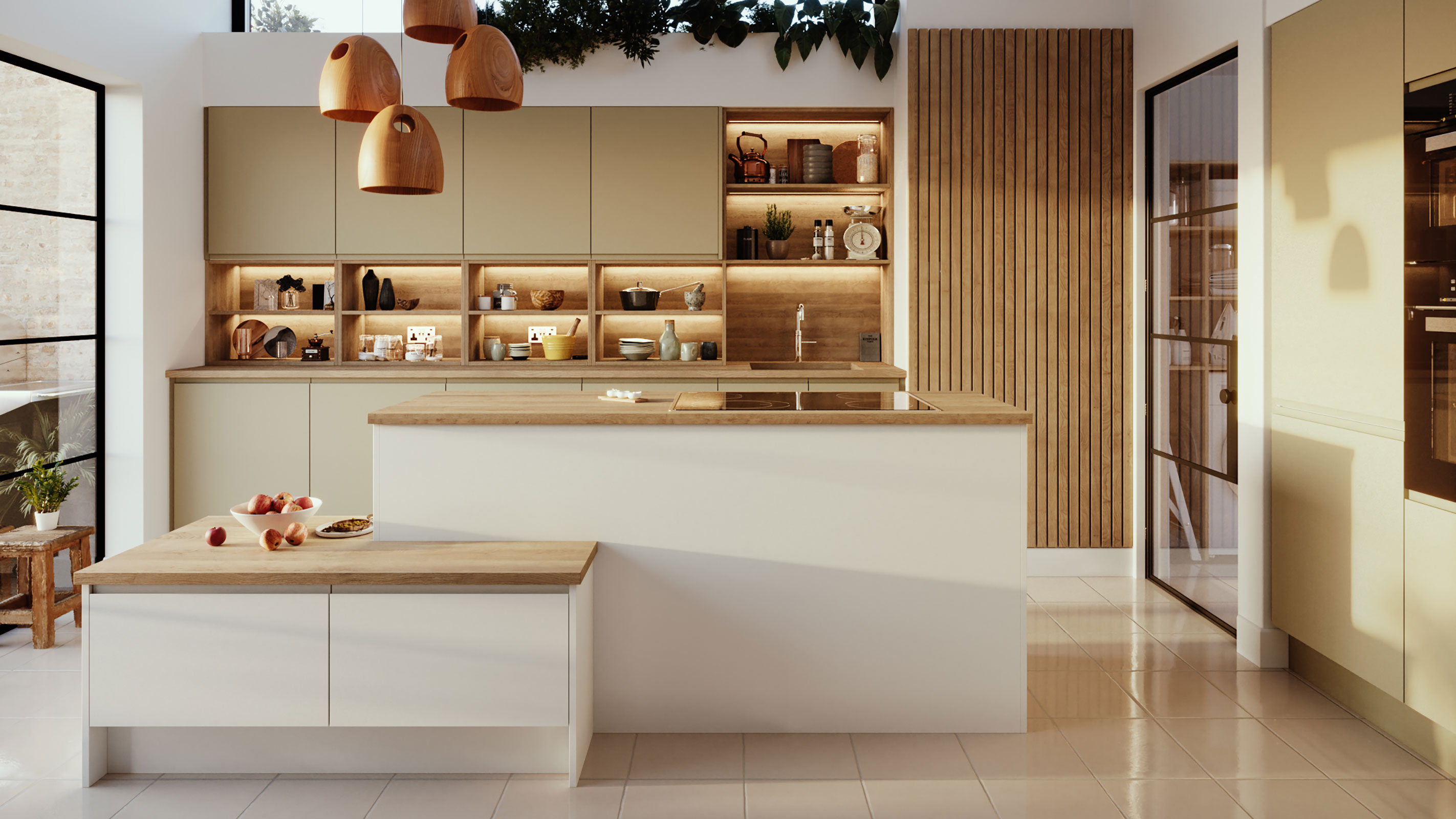
Should a kitchen island be the same height as the countertops?
This, as with when considering kitchen island sizes, all depends on what you plan on using your kitchen island for. In general, if you plan on using it to cook or prepare food at, the standard worktop height of 910mm seems to work best. Plus, keeping your island height the same as your work surfaces tends to look better, as well as making movement around the kitchen more seamless — particularly in the case of one-wall kitchens.
"For a seamless and coherent look, kitchen islands should typically be the same height as the rest of the cabinetry, usually around 910mm high," confirms Dawn Filkins, head of creative at Smile Kitchens. "This will also make the transition between working in different zones of the kitchen feel more natural."
"We would always recommend keeping your island the same height as your cupboards to ensure cohesion," agrees Al Bruce, founder of Olive & Barr.
That said, if you intend to use your kitchen island for standing around or as a sociable bar area, you may wish to reconsider — this is your kitchen after all and it needs to work for you.
"It is important to take into account the height of the person who will be using the island the most," says Dawn. "If you or your family members are taller or shorter than average, you may want to adjust the height accordingly to ensure that it is comfortable to work at and use."
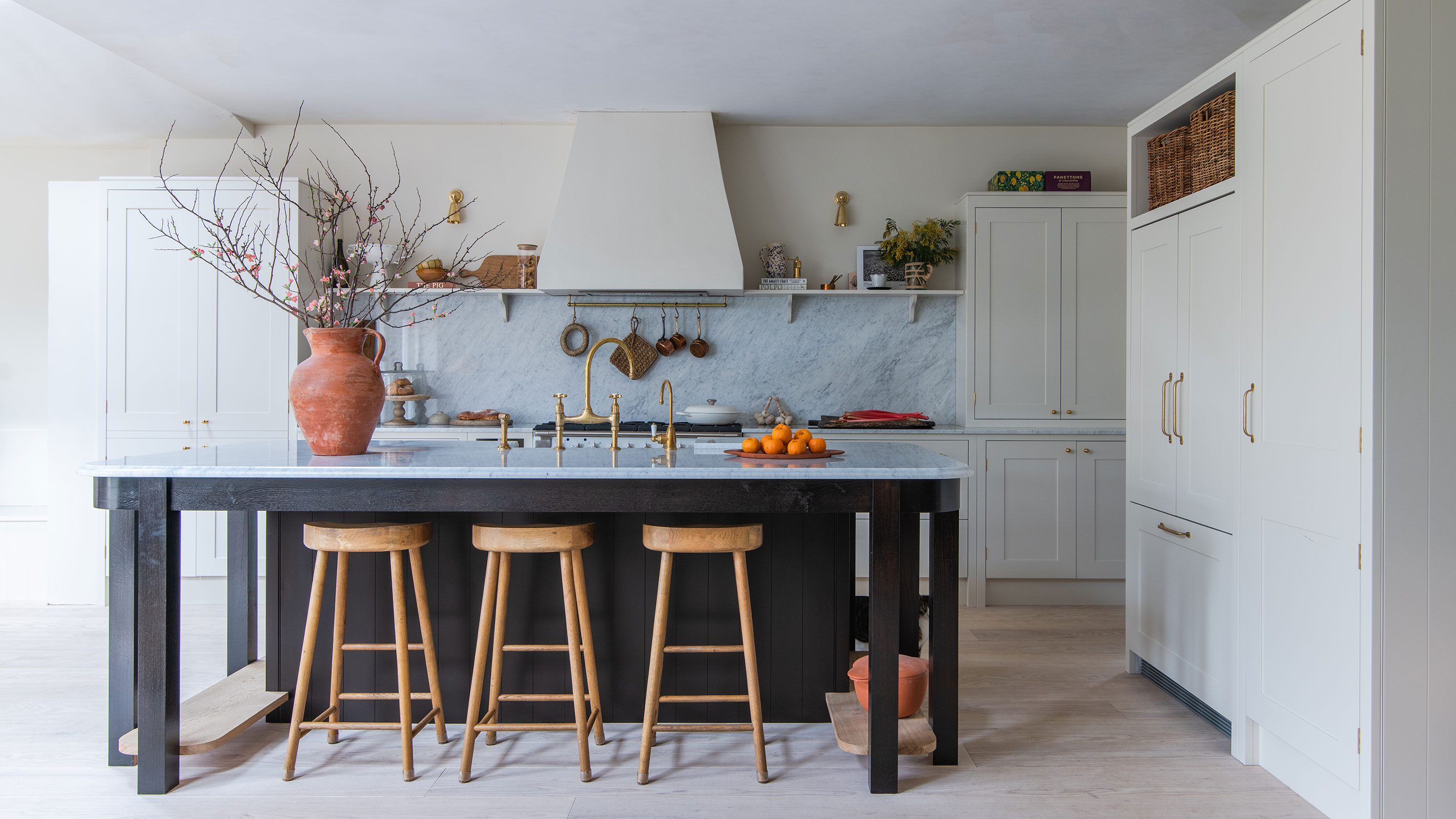
What height should a kitchen island be to eat at?
When it comes to designing a kitchen island that will provide somewhere to sit and eat, you once again need to consider your own lifestyle requirements. If you only want small kitchen island ideas or are just planning on using your island as a casual spot to grab a quick snack or as somewhere for guests to sit and pick at a few nibbles while you cook, you will need a different type of design than if you plan on using your island as your main dining table around which all meals will be taken.
If you are picturing your kitchen island as more of a bar than a table and like the idea of sitting at high stools, you are looking at a height around 100-200mm greater than your worktops.
"When it comes to selecting stools to sit underneath your island, generally you’re looking for a stool that is lower than a standard bar stool, this is typically around 720mm," advises Al Bruce.
If, on the other hand, you want one section of your island to act as a more traditional dining table, surrounded by standard chairs, you are looking at an island height of around 760mm.
You need to consider how comfortable your island table or bar will be to sit at and choose your chairs or stools wisely too.
"When designing seating around an island, the minimum width per person should be 600mm with 100mm on either side and knee space should not be forgotten either," says Dawn Filkins. "Ensuring there is no less than 300mm of depth between the island and stool/chair will avoid bashed knees and make for a more comfortable meal whilst seated at the island."
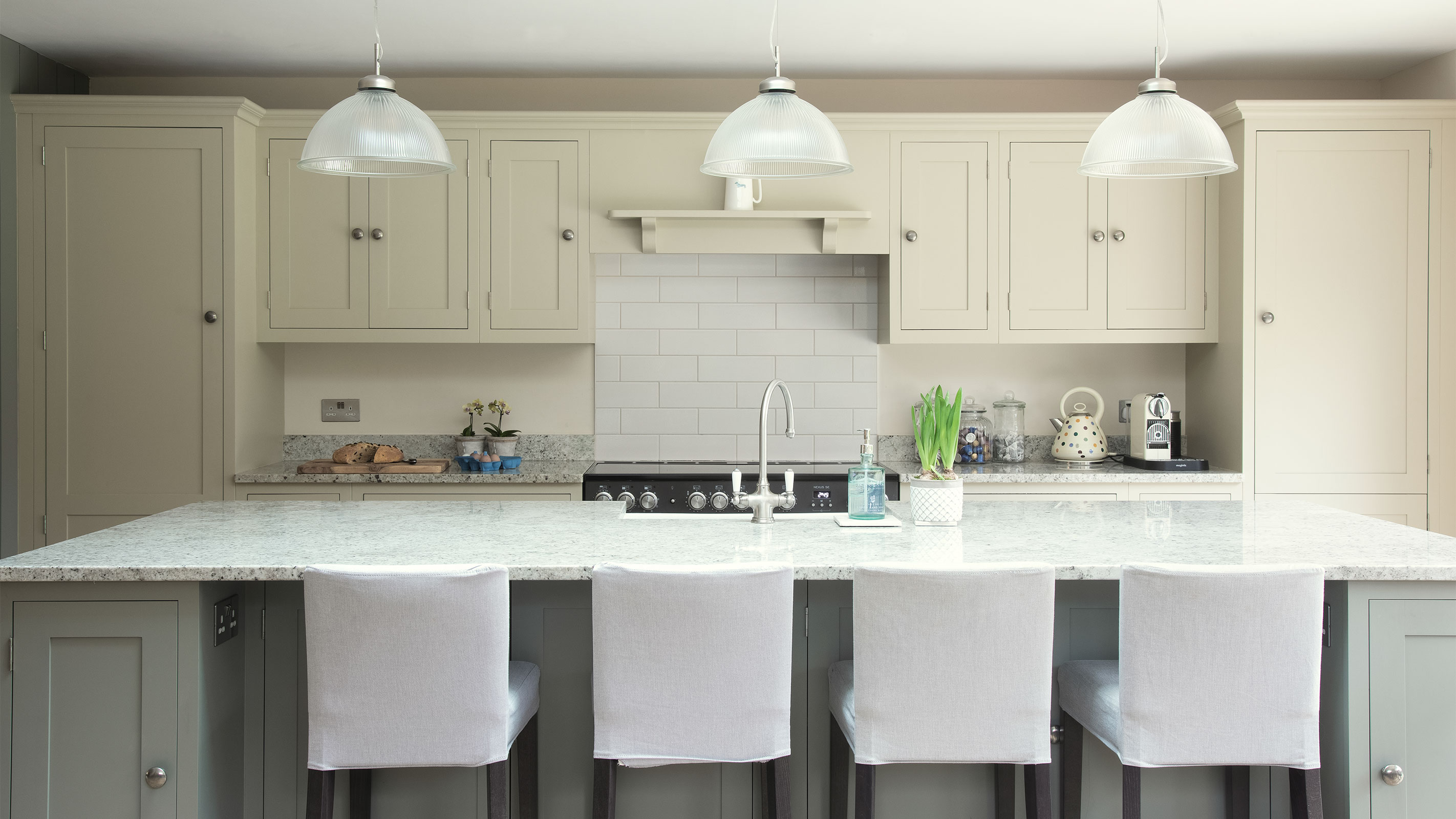
Can a kitchen island be different heights?
There is absolutely no reason why your kitchen island has to be the same height all over and, providing you have the space, mixing and matching heights is a great way to make sure you maximise the use you can get out of it.
"Varying heights can be an effective design element in a kitchen, allowing for multiple work zones and creating visual interest," says Dawn Filkins. "For example, you could have a raised area for a breakfast bar or a lowered section for a baking station."
In open plan kitchen diners, keeping the side of the island facing where guests are likely to be stationed a little higher than the 'working' side of the island is a useful way to hide kitchen clutter such as dirty pots and pans (or the burnt main course you have just taken out of the oven...)
That said, according to some experts, the split level island has fallen from favour in recent years.
"In terms of visual appeal, kitchen islands with a raised section are less popular these days and more of our customers are moving towards islands with an overhang for informal dining,” says Al Bruce.
Natasha was Homebuilding & Renovating’s Associate Content Editor and was a member of the Homebuilding team for over two decades. In her role on Homebuilding & Renovating she imparted her knowledge on a wide range of renovation topics, from window condensation to renovating bathrooms, to removing walls and adding an extension. She continues to write for Homebuilding on these topics, and more. An experienced journalist and renovation expert, she also writes for a number of other homes titles, including Homes & Gardens and Ideal Homes. Over the years Natasha has renovated and carried out a side extension to a Victorian terrace. She is currently living in the rural Edwardian cottage she renovated and extended on a largely DIY basis, living on site for the duration of the project.

